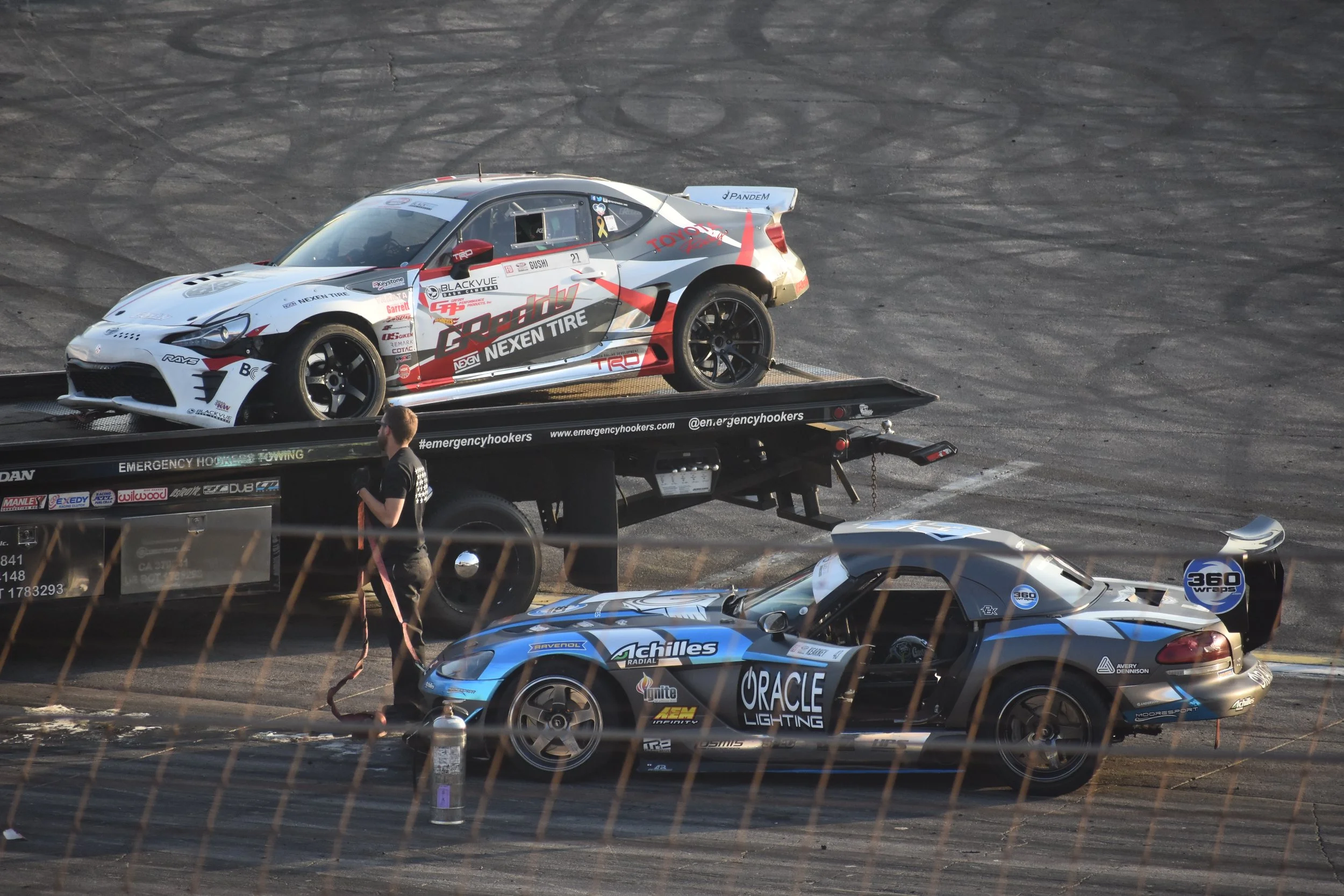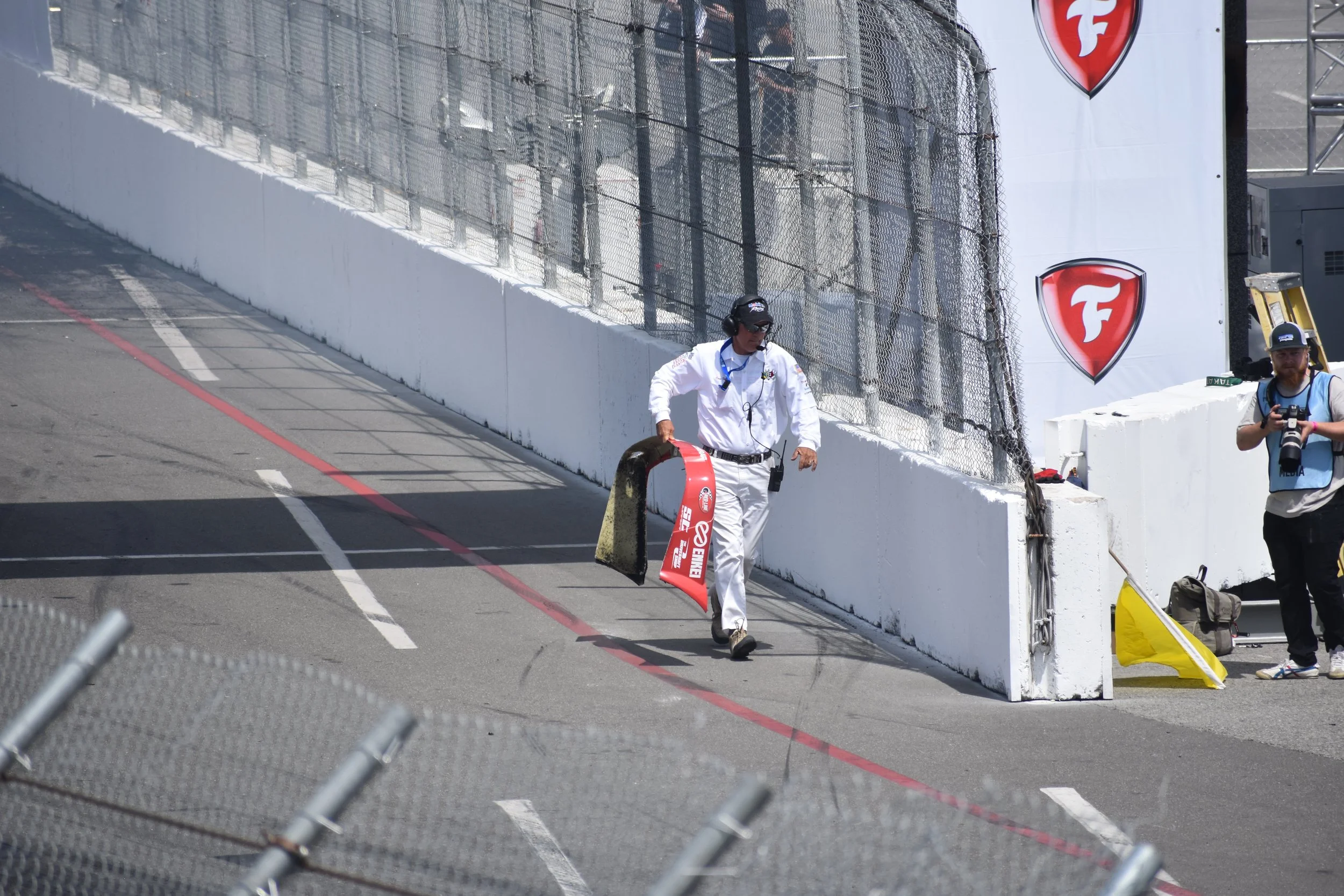A THOUSAND MORE LIVES
Photo courtesy of Drift Enthusiast Magazine
ADMIRING THE VICTIMS OF THE SKID.
It’s true, all motorsports are unforgiving to their vehicles, but it’s particularly true in the sport of drifting.
When the ultimate ambition is to drive a car as close to walls and other cars as you can, while also pushing your machine past it’s rated limitations, things are going to break. But this is also half the fun of drifting.
The other half is seeing your car come back to life, and fortunately for the fans (and the cars), drifting attracts a certain kind of uber-passionate motorhead that [almost] never gives up. And, as unforgiving as the sport can be on the machines that make it all happen, these drivers and their faithful crews have figured out how to create their own silver linings.
Resilience Is The Name Of The Drifting Game.
In motorsports, fame often comes with a price. So, when a competitive drift driver tests both their own capabilities and the limits of their car to get the performance result they want, it can sometimes be too much for the vehicle to handle.
For example, going too deep or hard into a wall can instantly (and sadly) end a car’s drifting career forever. That’s a hefty price to pay when a driver has no backup vehicle on hand to take its place (and many grassroots drivers don’t).
This one risk is often the barrier standing between the driver that loves to drift for fun and the hardcore driver that is serious about getting up to the pro level. These diehard drivers meet the threat of everything breaking head on and accept that fact they will continually have to invest in their cars until a sponsor shows up to help fund their path to the top.
Even so, to survive the sport at all, drivers and crew members at every level of drifting have to learn what it takes to straighten out a chassis or frame, repair broken fiberglass bumpers and panels, or replace critical parts that will lengthen the life of the drift machine.
The reality of things breaking, catching fire, or blowing up on a drift car is so innate, drivers will often take precautionary steps to upgrade steering, wheel spacing, clutches, cooling systems, and brakes/hand brakes well ahead of track day. After all, if an investment upfront can prevent your car from having casualties, it’s money well spent.
Tires, Tires, Tires…and…More Tires!
All tires naturally wear down after time, but when those tires are being spun on pavement, the rubber is like cheese to a cheese grater.
In drifting, tires get absolutely shredded into smoke, and sometimes even blow, because they have no threads left to hold them together. Therefore, any drift car driver knows they must always have liquid funds on hand to buy more tires.
This is true at all levels of drifting, whether competitive, or not. John Wagner, the organizer at the amateur drift event production house Club Loose II, told Grassroots Motorsports that tires are the greatest expense for a drifter, even at the amateur level.
Wagner estimated the average tandem drifter goes through as many as 10 tires a day, equaling a minimum of $400 or more each day, just for low-budget 15-inch performance tires. “Local tire shops have been helping us out with tires at cost and group buys. You can buy through Club Loose at wholesale,” he said.
Since replacing tires will always be a factor that any drift-hungry driver will have to deal with - regardless of how tech-savvy the tire manufacturers ever become - it helps to have supportive organizations like Club Loose and tire brand sponsors like Falken, Nitto, Federal, and Nexen all standing behind the drifting community and the sustainability of its future
Photo courtesy of Drift Enthusiast Magazine
Facing The End Of A Drift Car’s Career.
For the drifter, there are many financial challenges that can be harder to come to terms with than constantly swapping out tires. When an engine blows up, suspension components bend or snap, and even when body panels get smashed or fly off (which happens more often than not), it always leads to a significant repair.
The fact is, these issues (and a few others) can sometimes be so serious, you might be faced with the decision of whether to sunset your beloved drifting machine instead of trying to salvage it ‘one more time’. That’s never a good day.
Not only does it put you on point to hunt for another drift-worthy car that isn’t going to cost you or your sponsors an arm, leg, or torso (see more about the cars in Riding The Wall), it also adds a lot of other challenges for your entire crew.
Changing cars in any motorsport is a process, and drifting is no exception. In fact, getting to know a new drift car’s personality, stress capacity, and willingness to give you the love you desperately need on the track, are all very real things a drift driver has to go through when establishing a new vehicle relationship.
Moreover, there’s a lot of work you and your crew will have to do just to outfit your new rig for the track. And, last but not least, your own psychological health and welfare must be considered when it comes to facing the odds of potentially wrecking another massive investment.
That said, we like to think drivers who drift are a different breed; much like the special mix of rear-wheel-drive cars they love to take sideways.
Because, hey, even though it’s no fun when things break, as we noted before, everyone in drifting knows that half the fun of the overall experience is fixing the car so you can go back out and get the thrill all over again.
And, for the record, one type of damage many of us actually love seeing in this sport is a scratched rear bumper or tail light, because it usually means someone has nudged their capacity, and their car, to the limit without crossing the threshold. Wall taps are proof a driver has precision, style, and the guts to take the risk of pushing their car outside the lines to get the best result.
This is one way of showing that drifting a car is truly an artform, even though everyone knows there aren't any magic erasers to undo the mistakes in this sport. You just have to learn how to take the stress, rebound, and give your car as many lives as it will give you.
As you can see, we’re just as into the sport of drifting as you are, and we’d love to hear stories about your car’s many lives. Give us a shout through our comment form anytime or share your experiences on our social sites @driftenthusiastmag.
Thanks a million!


